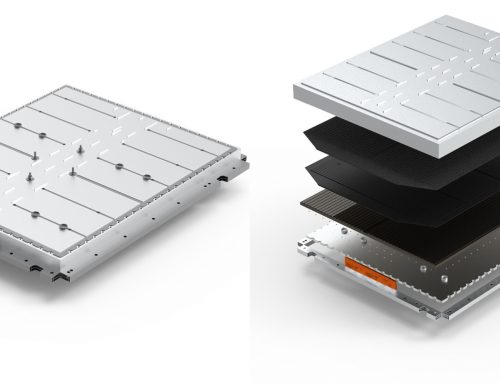A research article with the name of LiFePO 4 water-soluble binder electrode for Li-ion batteries was published in 2006 by Elsevier B.V.. In this article, the authors pointed out that,
The PVdF has strong binding strength,but low flexibility. The low flexibility of PVdF can easily deteriorate cycle life characteristics of the battery due to breaking ofthe bond between active materials when the active material anda carbon material and consequently expansion/contraction pro-cess occurs during charging and discharging. Therefore, in orderto absorb the expansion and contraction stresses of the active material during charging and discharging, it has been suggestedto adopt a binder having elasticity.
Meantime, the authors stated that,
Fluorine is one of the degradation products inthe battery that produces stable LiF. Depending on the liquidelectrolyte, the formation reaction of LiF and other harmfulproducts with double bond (CCF–) is accelerated[9–11]. Fur-thermore, self-heating thermal runaway can be induced. Withrespect to safety, a binder such as PVdF, which is soluble inorganic solvent, is dangerous to humans and the environment.Because the organic solvent used in electrode fabrication withPVdF must be recovered, alternative binders that are less costly and more environment friendly are essential.
Since the binder material is one of the crucial electrode components for improved cell performance, for example, cycle life. In this regard, the authors thought that,
The elastomer is an attractive binder because it permits a high active material ratio and flexibility to the cathode compared to conventional PVdF binder. In addition, the water dispersion process of the slurry is environment friendly.
The advantages of aqueous binders are as follows: (1) low cost, (2) no pollution problem,(3) enhancement of the active material ratio in a cell owing to thereduction of binder content, (4) no requirement for strict controlof the processing humidity and (5) fast drying speed in electrode fabrication.
Finally, the authors concluded that,
Study indicates that fabrication of cathode coatings with low surface roughness is relatively easy to obtain with the ZEON elastomer water-soluble binder. These cathodes are much more flexible than cathodes based on PVdF cathode. By using elastomer binder, the amount of binder was reduced while still maintaining better mechanical properties of the cathodes. The electrochemical performance shows lower irreversible capacity losses were obtained with cathodes with the elastomer binder. At 60◦C, both binders show stable cycling life. The cell shows high rate capability at 60◦C with more than 80% of the capacity can be delivered at 15C.
